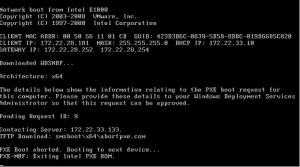How to Screenshot on Mac: A Step-by-Step Guide


How to Screenshot on Mac: A Step-by-Step Guide


Introduction
Capturing screenshots on your Mac can be incredibly useful for various purposes, whether you want to save an image, capture a specific moment, or share information with others. In this comprehensive guide, we will walk you through the step-by-step process of taking screenshots on a Mac. By following these instructions, you’ll become proficient in capturing screenshots using different methods and shortcuts.
Step 1: Understand Different Types of Screenshots
Before we dive into the details, it’s essential to understand the different types of screenshots you can capture on a Mac:
- Full Screen: Captures the entire screen, including the menu bar and Dock.
- Selected Area: Allows you to select and capture a specific portion of the screen.
- Window: Takes a screenshot of a specific window or application.
- Touch Bar (for MacBook Pro): Specifically captures the Touch Bar on MacBook Pro models.
Now let’s explore the various methods to capture screenshots on a Mac.
Step 2: Using Keyboard Shortcuts
The quickest and easiest way to capture screenshots on a Mac is by using keyboard shortcuts. Here are the common shortcuts to remember:
Full Screen Screenshot
Press Command (⌘) + Shift + 3 simultaneously. You will hear a camera shutter sound, and the screenshot will be saved as a PNG file on your desktop with a filename in the format “Screen Shot [date] at [time].png.”
Selected Area Screenshot
Press Command (⌘) + Shift + 4 together. Your cursor will change to a crosshair reticle. Click and drag to select the desired area of the screen. Once you release the mouse button, the screenshot will be saved as a PNG file on your desktop.
Window Screenshot
Press Command (⌘) + Shift + 4 together, then press the Spacebar. The cursor will transform into a camera icon. Move the camera icon over the window or application you want to capture, and it will be highlighted. Click to capture the screenshot, which will be saved as a PNG file on your desktop.
Touch Bar Screenshot (for MacBook Pro)
Press Command (⌘) + Shift + 6 together to capture a screenshot of the Touch Bar on MacBook Pro models. The screenshot will be saved as a PNG file on your desktop.
Step 3: Using the Screenshot App
Mac also provides a built-in Screenshot app that offers additional options and flexibility. Follow these steps:
- Press Command (⌘) + Shift + 5 to open the Screenshot app.
- The Screenshot app will appear at the bottom of the screen, presenting various capture options:
- Capture Entire Screen
- Capture Selected Window
- Capture Selected Portion
- Record Entire Screen
- Record Selected Portion
- Click on the desired option to select the capture type.
- If you choose the “Capture Selected Portion” option, click and drag to select the desired area.
- Customize the settings as needed, such as choosing the save location, setting a timer, or enabling/disable the microphone for screen recording.
- Click on the “Capture” button, or press the Spacebar if you are capturing a window or portion.
- The screenshot will be captured and saved according to the chosen options.
Step 4: Editing and Annotating Screenshots
Once you have captured a screenshot, you may want to make some edits or annotations. Mac provides basic editing tools in the Preview app. Follow these steps to access the editing features:
- Open the screenshot you want to edit in the Preview app. To do this, double-click the screenshot file on your desktop or right-click and choose “Open With” > “Preview.”
- In the Preview app, click on the “Show Markup Toolbar” icon in the toolbar. It looks like a toolbox.
- The Markup Toolbar will appear, providing various tools for editing and annotating your screenshot. These tools include shapes, text, highlighting, drawing, and more.
- Select the desired tool from the toolbar and apply the edits or annotations to your screenshot.
- Once you finish editing, go to File > Save to save the changes to your screenshot.
Step 5: Using Third-Party Apps
Apart from the built-in methods, you can also explore third-party apps that offer advanced screenshot capturing capabilities. These apps often provide additional features, such as capturing scrolling webpages or recording screen videos. Here are some popular options:
- Snagit: Snagit is a powerful screen capture and recording tool that offers a wide range of features for capturing and editing screenshots. It provides an intuitive user interface and advanced editing options.
- Lightshot: Lightshot is a lightweight and user-friendly app that allows you to capture and edit screenshots quickly. It offers simple editing tools and the ability to share screenshots online.
- Skitch: Skitch is a versatile screenshot and annotation tool developed by Evernote. It provides various annotation options and integration with Evernote for easy organization and sharing.
Conclusion
Capturing screenshots on a Mac is a straightforward process that can be done using keyboard shortcuts, the built-in Screenshot app, or third-party tools. By following the step-by-step instructions provided in this guide, you can effortlessly capture screenshots of your Mac screen, specific windows, selected areas, or even the Touch Bar on MacBook Pro models.
Remember to familiarize yourself with the different types of screenshots and their corresponding keyboard shortcuts to save time and capture the desired content accurately. Additionally, leverage the editing features available in the Preview app or explore third-party apps for more advanced editing and annotation options.
Now that you have mastered the art of taking screenshots on your Mac, you can easily capture and share important information, create tutorials, troubleshoot technical issues, or document memorable moments with just a few simple steps. Happy screenshotting!








